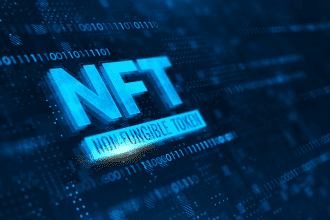With public blockchains, traditional finance falls foul of transparency once more. Banks and asset managers cannot afford to expose their on-chain positions, counterparties, or client data. They understand that tokenization, atomic settlement, and programmable markets could all bring huge benefits. Nevertheless, they do not want to conduct business in a glass house. It is this tension that has kept most of Wall Street away from crypto, even as the market as a whole has swollen to many trillions of dollars.Now, Chainlink is claiming that its latest Confidential Compute feature–embedded directly in the Chainlink Runtime Environment (CRE)–provides an out.
The promise is simple yet bold: let institutions run their sensitive workflows off-chain, prove that they executed correctly, and only expose the necessary results back on-chain–without ever leaking the underlying data or proprietary logic. If that scales up, it is not just a technical milestone. It alters the contours of what institutional capital can do on public networks.
In the work developed by CRE, Confidential Compute is a privacy layer working exclusively for institutions. The result is that private things can be sent to us—such as trades, positions, key client data or risk limits—along with the rules that should govern that data, be it pricing models, compliance checks or risk controls. We do the computation in a secure off-chain environment, and the result comes back to the blockchain as cryptographically signed output saying “here is what happened at this time on such-and-such a date,” while hiding both inputs and business logic.Rather than depending on a single centralized server, Chainlink ties this up in the chain of trust with trusted execution environments (TEEs) from each cloud provider and secured by its decentralized oracle network for attestation and key management. Over time, the same framework is scheduled to support more advanced privacy backends like zero-knowledge proofs, multi-party computation and fully homomorphic encryption.
CRE is an off-chain execution platform that can handle general-purpose workflows in public blockchains like Ethereum and Base, or permissioned ledgers and Web2 APIs. Confidential Compute is a function inside this environment: when a workflow is designated as confidential, its data is passed into TEEs or equivalent privacy systems. With each execution, there is a cryptographic attestation showing which logic ran in what environment and at what time; the data itself is still under seal.The division between a public validation layer and a restricted data layer is precisely what auditors and counterparties require: verification of correctness without demanding to know every detail beneath.
At present, our system leans hard into TEEs, these provide performance almost as good as native speed and this is critical for jobs like corporate treasuries, collateral dashboard and high frequency settlements. TEEs isolate computing within an encrypted enclave on the CPU. They keep it safe from the host operating system and any eventual public cloud provider, produce evidence of which code has actually run. Chainlink recognizes no TEE is infallible side \channel and physical attacks are recognized risks. So its design incorporates distributed key generation: no single node controls a full key and a, long-lived confidential data in encrypted, secret shared form decentralized oracle network dubbed the “Vault DON.” Multiple TEEs, multiple cloud environments, separate attestation for safety. Looking ahead, CRE may become a routing layer that sends different workflows to TEEs, zk-based systems, MPC, or FHE as appropriate. For institutions, key management and long-term data storage are almost as important as computing per se. The distributed key generation of Confidential Compute means that to break the key you must break into many separate machines. The Vault DON holds such sensitive information as KYC attributes or perpetually open hidden positions, keeping it in encrypted form perpetually across multiple nodes. This is a reflection of regulatory expectations: not one single rogue operator, not the whole system confined integrity upending failure by one cheap knock off chip.
The practical uses of Chainlink are all about bringing private logic into contact with public settlement and liquidity. This means private real-world asset tokenization on-chain is possible when cash flows and risk logic are verifiable yet underlying positions & the identities of clients remain secret. Cross-chain delivery-versus-payment workflows allow for the atomic settlement of tokenized bonds and cash, all without exposing full books to memory pool watchers. Data providers can push high-frequency trading signals on-chain for a small number of paying subscribers, but demonstrate the correctness without passing around raw data to everybody. KYC and compliance checks can be off-chained using “eligible / ineligible” flags plus an audit trail instead of putting identification documents onto a ledger. One of Chainlink’s most significant design decisions actually treats privacy as a non-affordable off-chain service rather than bringing out another privacy chain /rope.
Sensitive logic and data are in CRE and its privacy backends, while settlement takes place on major public networks where liquidity as well as DeFi primitive are already established. So neither luxury nor rent extraction transpires in private processes. Privacy rollups which includes zero-knowledge proofs can provide stronger pure cryptographic guarantees, but they tend to isolate assets and need plain bridges for broader liquidity, making both more expensive (because more systems are involved) and more complicated. By contrast, Confidential Computing lets assets stay where they are most liquid already while moving only privacy “beside” the chain and not inside a new one.
Chainlink’s approach, through combining decentralized attestation, distributed keys, and plans for adding ZK, FHE and MPC, moves in the same hardware anchored lane as networks such as Oasis Sapphire. In contrast to Ethereum, it’s also a neutral organizer that can direct workloads to the most suitable back end depending upon what is necessary and available at any given moment. [reference to previous section] That same infrastructure Current is connected with CCIP integrations and different shards from one end-to the other allows private assets and workflows to access DeFi protocols already off-platform, share collateral pools, as well as cross chains. Regulatory confidence is a third leg of the tripod -privacy alone won’t entice Wall Street onto the chain; Regulators are suspicious of anything that seems to be impenetrably shrouded in secrecy. What Chainlink is providing is Confidential Computing with an automatic compliance engine disguised in its DNA, encoding KYC details, under which jurisdictions trades occur, and the boundary conditions for risks all within confidential workflows.
The system can enforce these rules automatically while still producing cryptographic “logs” that are audit-ready, allowing supervisors a juicy bone that they can pick over without spoiling privacy for everyone else involved in global markets. The main constraint is time. Confidential Compute debut on CRE was just last month. Attending early access starts in 2026 with full deployment by 2024. This creates an interval for players like Aztec, Aleo, one of various FHE and TEE-based L2 chains and so on, who eclipse the Matakite and Catus and have real-world usage already in the bag whereas waiting could drag them to profitless inventory space for all they know. The competition now is whose model is “good enough, soon enough” for institutions that are already dabbling with what amounts to tokenized funds, chains in sourced FX facilities, and programmable or decentralized settlements.
In the end, Chainlink’s Confidential Compute dazzles. It is a starting point You’ve got speed, interoperability with public liquidity, and a path towards stronger cryptographic privacy all bundled inside a single, institutionally-grade architecture. Whether it becomes the dominant standard will depend on how quickly it ships, what attitudes TEE-centric designs inspire in regulators and risk committees, and how quickly alternatives mature.






















